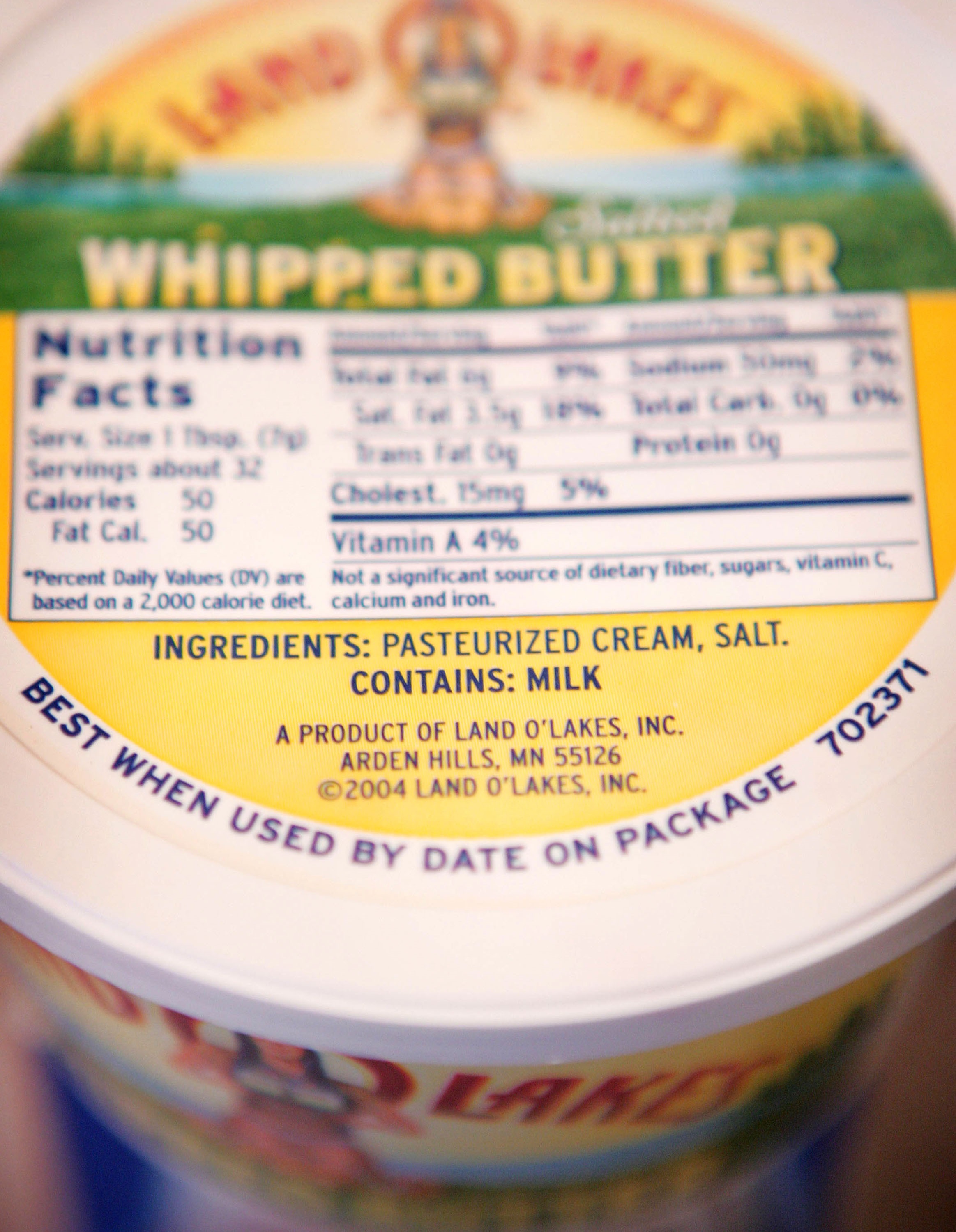The nutrition labels on the backs of packaged foods are getting a proposed makeover Thursday that will make calorie counts more noticeable, serving sizes more realistic and added sugars more obvious.
The changes, proposed by the Food and Drug Administration, will be announced by first lady Michelle Obama at the White House and tied in to the fourth anniversary of her Let's Move Campaign. Like that campaign, the proposal reflects concerns about obesity and the quality of the American diet that were not as prominent when the labels last had a major update in the early 1990s.
The proposal "is a big deal, and it's going to make a big difference for families all across this country," Obama said in a statement released early Thursday.
The FDA is releasing two versions of the proposed label for the public — and everyone from food manufacturers to dietitians — to consider and argue about in the next 90 days. It's unclear how long any changes might take to implement after that.
Among the proposed changes:
• Calorie counts will be in bigger, bolder print than other facts.
• Grams of added sugars, whether they come from corn syrup, honey, sucrose or any other source, will be shown in one number.
• Serving sizes will reflect portions people typically eat, as shown by studies — meaning they will be bigger than serving sizes are now on many products.
• "Calories from fat" will be gone, while total fat, saturated and trans fats remain, reflecting science showing the type of fat people eat is more important than the amount.
Nutrition experts who previewed the proposed changes said they saw plenty to like, even as some suggested their own tweaks. Food companies can be expected to raise concerns about the costs of the proposed changes and at least some of the details.
Making calorie counts bigger and bolder is the right thing to do because "the major public health crisis in the United States is body weight," says Alice Lichtenstein, a professor of nutrition science at Tufts University, Boston. On existing labels, "the calorie information doesn't pop out, and it isn't clear to the consumer that the calories are the amount per serving."
The proposed labels make serving sizes clearer and in many cases, realistically bigger, says Michael Jacobson, executive director of the non-profit Center for Science in the Public Interest, Washington. He says FDA officials have told him that a serving of ice cream would rise from half a cup to a full cup, and a one-serving muffin would be four ounces instead of two ounces.
The proposal also says foods and drinks that people typically consume in one sitting — such as 20-ounce bottles of soda — will be labeled as single servings.
The changes will "prevent companies from using these large single-serving packages and pretending they are multiple servings," Jacobson says.
The listing of added sugars will help consumers sort out which sugar comes from the peaches in their canned peaches and which comes from sweeteners, Jacobson says. The same goes, he says, for foods such as sweetened yogurt, where some sugar comes from milk and fruit but a lot comes from added sugar. "That's an important change," he says.
He says he would be happier if the added sugar was listed in teaspoons, which consumers understand better than grams. He also says the FDA is setting daily values for sodium higher than many experts might like, at 2,300 milligrams a day, and not addressing caffeine.
The biggest question is whether the changes will actually lead more consumers to read and use the information to eat fewer calories and watch their consumption of everything from sugar to sodium and fiber.
Jeremy Kees, an associate professor of marketing at Villanova University in Pennsylvania, is skeptical. To the average consumer, he says, these may be "subtle changes to what I would consider an already cluttered environment on the back of the package. I wouldn't think the FDA would expect large, measurable changes in the short term, especially if there are no educational campaigns."
The FDA is expected to test the labels with consumers, Lichtenstein says. "That's going to be crucial. Sometimes people interpret things in a way we didn't expect."
A recent study from the U.S. Department of Agriculture found 42% of working-age adults and 57% of older adults say they use the nutrition facts panel "always or most of the time."
Reports out ahead of Thursday's announcement suggest food companies will fight at least some of the details, including the call for listing added sugars. "Everyone in the industry is going to be affected. Everyone in the industry is going to have to change their labels," Regina Hildwine of the Grocery Manufacturers Association toldPolitico. "It's a very big deal. It's very expensive."
In a statement Thursday, the association says: "It is critical that any changes are based on the most current and reliable science. Equally as important is ensuring that any changes ultimately serve to inform, and not confuse, consumers."


